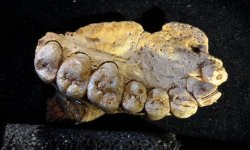DeirdreTerry
Newbie
- Mar 9, 2018
- 1
- 4
- Primary Interest:
- All Treasure Hunting
Heard this news stating that a jawbone was found in Israel that is estimated to be 200,000 years old. If stats are to be believed, can we really consider this jawbone to belong to a human?
By looking at the image, it doesn't look like a human bone. It can be of some animal as well. Plus 200,000 years old, that makes it more skeptical.
What are your thoughts?

By looking at the image, it doesn't look like a human bone. It can be of some animal as well. Plus 200,000 years old, that makes it more skeptical.
What are your thoughts?

Last edited by a moderator:





